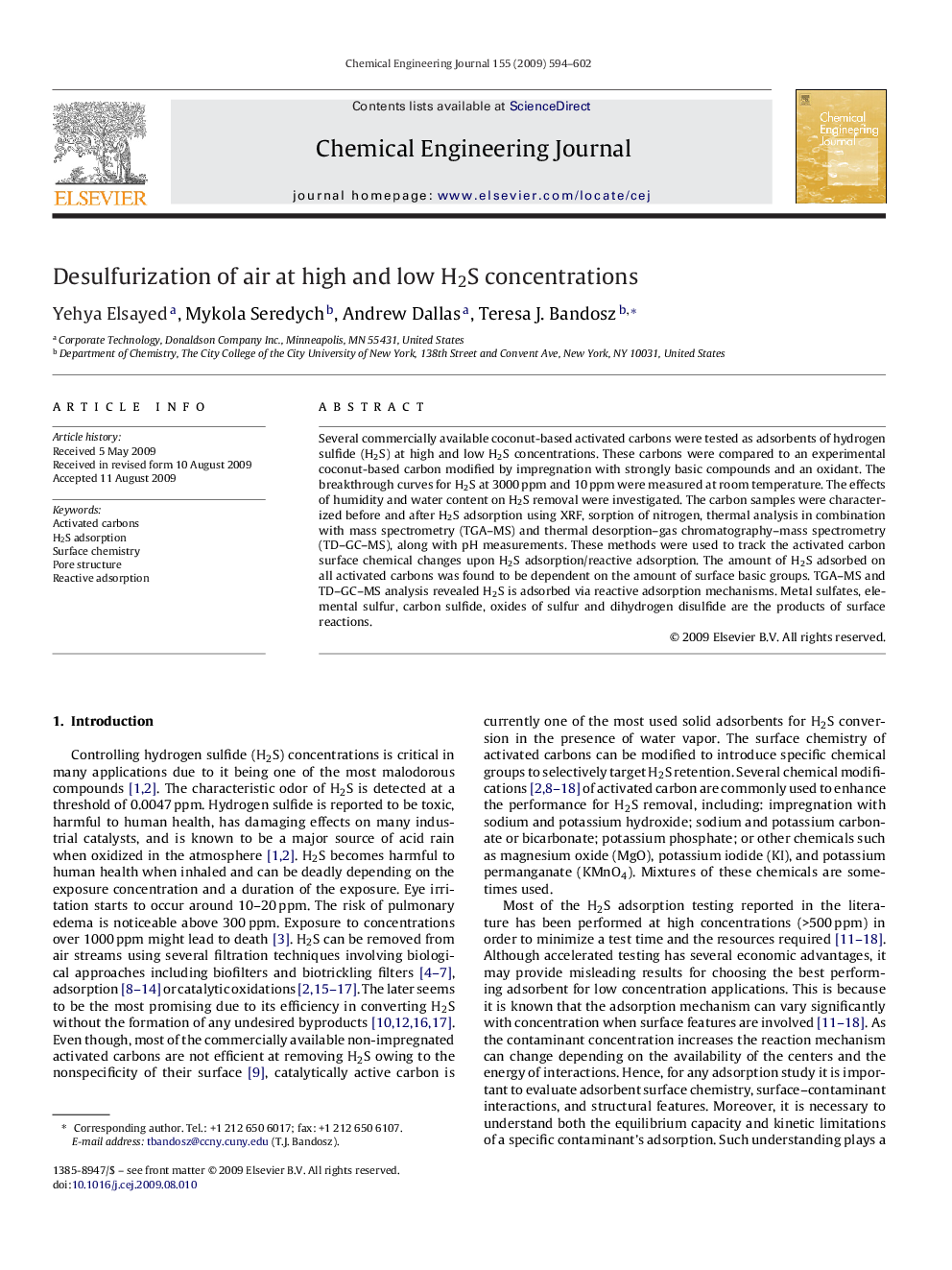| Article ID | Journal | Published Year | Pages | File Type |
|---|---|---|---|---|
| 151871 | Chemical Engineering Journal | 2009 | 9 Pages |
Several commercially available coconut-based activated carbons were tested as adsorbents of hydrogen sulfide (H2S) at high and low H2S concentrations. These carbons were compared to an experimental coconut-based carbon modified by impregnation with strongly basic compounds and an oxidant. The breakthrough curves for H2S at 3000 ppm and 10 ppm were measured at room temperature. The effects of humidity and water content on H2S removal were investigated. The carbon samples were characterized before and after H2S adsorption using XRF, sorption of nitrogen, thermal analysis in combination with mass spectrometry (TGA–MS) and thermal desorption–gas chromatography–mass spectrometry (TD–GC–MS), along with pH measurements. These methods were used to track the activated carbon surface chemical changes upon H2S adsorption/reactive adsorption. The amount of H2S adsorbed on all activated carbons was found to be dependent on the amount of surface basic groups. TGA–MS and TD–GC–MS analysis revealed H2S is adsorbed via reactive adsorption mechanisms. Metal sulfates, elemental sulfur, carbon sulfide, oxides of sulfur and dihydrogen disulfide are the products of surface reactions.
